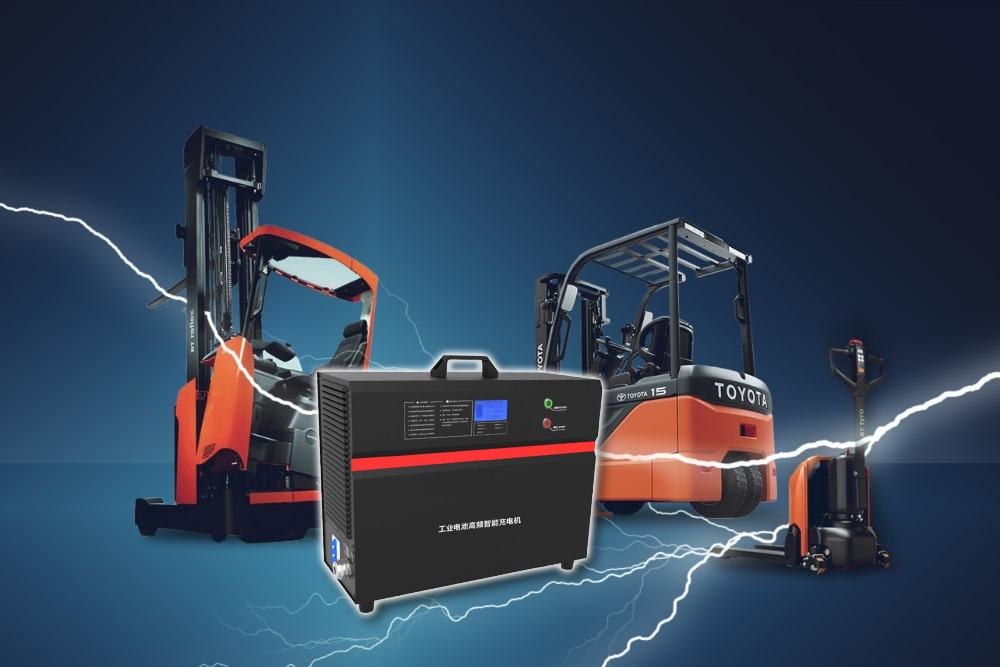How Long Does It Take to Recharge a Forklift Battery? A Detailed Guide on Charging Times for Lead-Acid and Lithium-Ion Forklift Batteries

When operating electric forklifts, one of the most critical aspects of maintaining productivity is understanding the battery recharge time. The efficiency of your operations depends not only on how long a forklift can run before it needs recharging but also on how long it will take to recharge the forklift battery. In this article, we will explore the charging times for lead-acid batteries and lithium iron phosphate (LFP) forklift batteries, compare their advantages, and provide essential tips for safe and efficient charging. Additionally, we’ll highlight the benefits of using SPIDERWAY LFP Forklift Batteries and their matching chargers.
Charging Time for Lead-Acid Forklift Batteries
Lead-acid batteries have been the traditional choice for forklifts due to their affordability and proven performance. However, they come with certain limitations in terms of charging times.
Typically, it takes between 8 to 12 hours to fully recharge a lead-acid forklift battery, depending on the battery size, age, and state of charge. The longer charging time is primarily due to the chemical process that occurs during recharging, which is slower compared to modern battery technologies. Additionally, charging efficiency decreases over time as the battery ages, potentially extending recharge times.
Charging Considerations for Lead-Acid Batteries:
- Avoid Partial Charges: It's best to fully charge a lead-acid battery rather than opting for partial recharges, which can reduce battery lifespan.
- Cooling Period: Lead-acid batteries need time to cool down after heavy usage before starting the recharge cycle. This ensures safety and prolongs the battery's health.
- Maintenance: Regular maintenance, such as checking the water levels and ensuring proper cleaning, is essential for optimal performance.
Charging Time for Lithium-Ion (LFP) Forklift Batteries
Lithium iron phosphate (LFP) batteries, such as those offered by SPIDERWAY, are rapidly becoming the preferred choice for forklift applications. One of the main advantages of LFP batteries is their fast charging capability, significantly reducing downtime for your operations.
Typically, LFP forklift batteries can be recharged in 2 to 4 hours, depending on the charger capacity and the specific requirements of the forklift. This is a stark contrast to lead-acid batteries, providing a clear operational advantage when time is of the essence.
Charging Considerations for LFP Batteries:
- High Charging Efficiency: LFP batteries feature a higher charging efficiency than lead-acid, meaning they can be charged quickly without compromising their performance or lifespan.
- Opportunity Charging: LFP batteries are designed for opportunity charging, meaning they can be topped off during breaks or downtime without affecting the battery's longevity.
- No Need for Watering: Unlike lead-acid batteries, LFP batteries do not require regular maintenance like checking and refilling water, which reduces long-term upkeep costs.
Advantages of SPIDERWAY LFP Forklift Batteries
When it comes to fast, reliable charging and overall efficiency, SPIDERWAY LFP Forklift Batteries offer several key advantages:
- Faster Recharge Times: As mentioned, SPIDERWAY’s LFP batteries can be fully recharged in just a few hours, significantly reducing the time your equipment is out of service.
- Longer Battery Life: With an expected lifespan of 4,000–5,000 charge cycles, LFP batteries from SPIDERWAY outlast traditional lead-acid batteries by a significant margin, making them a smart long-term investment.
- Lower Total Cost of Ownership: Due to reduced maintenance needs and longer service life, SPIDERWAY LFP batteries help businesses save on replacement and upkeep costs.
- Eco-Friendly: SPIDERWAY’s LFP batteries are more environmentally friendly than lead-acid batteries, as they do not contain toxic substances like lead and are easier to recycle.
Safety Guidelines for Charging Forklift Batteries
Whether you are charging a lead-acid or LFP forklift battery, following safety guidelines is crucial to ensure the safety of your staff and equipment. Here are a few essential safety tips:
- Always Charge in a Well-Ventilated Area: Charging batteries, especially lead-acid ones, can release gases that may be hazardous. Ensure that the charging area is properly ventilated to avoid the buildup of harmful gases.
- Monitor the Charging Process: Never leave batteries charging unattended. Always ensure that the charging process is conducted in accordance with the manufacturer’s instructions.
- Use the Correct Charger: Each type of battery requires a specific charger. Using the wrong charger can lead to overheating, reduced battery life, and even safety hazards. SPIDERWAY LFP batteries are designed to work with matching chargers for optimal performance.
- Follow Battery Maintenance Protocols: For lead-acid batteries, regular maintenance, including checking the electrolyte levels and cleaning the battery terminals, is essential. For LFP batteries, less frequent maintenance is required, but regular inspections ensure the best performance.
Conclusion
Understanding how long it takes to recharge a forklift battery—and the differences between lead-acid and LFP technologies—can help improve operational efficiency. While lead-acid batteries are still widely used, they come with longer recharge times and more maintenance needs. In contrast, SPIDERWAY LFP Forklift Batteries offer fast charging times, lower maintenance costs, and longer life, making them a smart choice for businesses looking to optimize their forklift fleet.
By choosing the right battery technology for your forklift fleet and following proper charging and safety practices, you can keep your operations running smoothly and maximize your investment. Consider switching to SPIDERWAY LFP Forklift Batteries for a more efficient and cost-effective solution that meets the modern demands of your business.
Key Takeaways:
- Lead-acid forklift batteries take 8–12 hours to recharge, while LFP batteries can recharge in 2–4 hours.
- SPIDERWAY LFP batteries offer faster recharge times, longer life, and lower maintenance needs.
- Always follow safety guidelines when charging any type of forklift battery to ensure safe and efficient operations.
Comments
Post a Comment